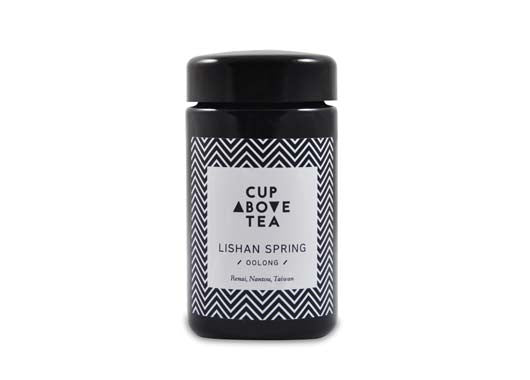Lishan Spring - oolong tea
$3.95

| Style | Oolong Tea | |
| Origin | Origin Renai, Nantou, Taiwan | |
| Season | Spring 17 | |
| Altitude | 1500m | |
| Batch | TT01 | |
| Plant | QingXin cultivar | |
| Tea Master | Master Chi Xing Chen |
Harvested from a high mountain garden, this vintage Taiwanese tea is light yet intensely flavourful. Full of fragrance and delicate layers, there are peach and lychee undertones, evocative florals and hints of fresh citrus. Infuse the same leaves several times. A perfect oolong tea for a good conversation.

The Stories We Drink
|
Taiwan is known for oolong tea production and is particularly famous for its high mountain varietals. Anything grown above an elevation of 1000 metres is considered high mountain or ‘gaoshan’. There are lots of famous tea mountains in Tawian and each has a slightly different terroir which you can taste in the distinct flavour characteristics of the teas. Oolongs grown on Lishan, or Pear Mountain, tend to be especially fruity and floral. The Spring harvested tea in particular has lots of fragrance and very delicate layers. Many Lishan tea gardens are planted on former orchards and enjoy highly fertile and rich soil. There are still many pear, apple and peach orchards on Lishan but the economic importance of this farming has declined as a result of cheaper imported fruit. The high elevation land suitable for agriculture is in huge demand. This scarcity, coupled with the relatively small harvests just two times each year means Lishan oolong is much coveted and sought-after by connoisseurs. The Chen’s 20 acre garden, called Dong Yan, is in the northern Nantou region. It was selected for its unique terroir and pronounced temperature shifts. Climate fluctuations from day to night means this tea grows more slowly, but it develops more aroma and sweetness. Lishan mountain plantations are amongst the highest in the world and the subtropical climate and mists that envelope Dong Yan are ideal for growing superb tea. |
|
Craftsmanship
This oolong is lightly rested. It has been stored exceptionally and retains great freshness and depth of flavour. It is drinking very well now and gives you an opportunity to taste a great vintage a few years on. It is lightly oxidised at 30%.





















